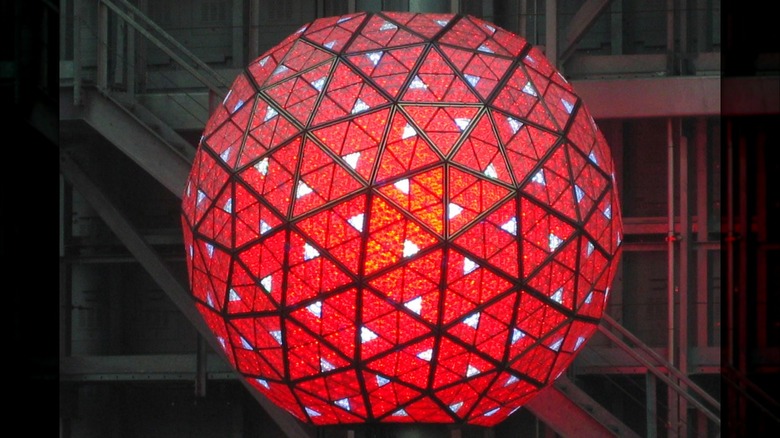The Real Reason We Drop A Ball On New Year's Eve
On New Year's Eve, people crowd around in New York City's Time Square or huddle around their TV screens to watch the ball drop, signaling the end of one year and the beginning of the next. It's a longstanding tradition to check out the descent of this glowing orb, but where on earth did this whole ritual come from?
The practice borrows from an early time-telling indicator that dates back to the 19th century. One of the earliest uses of a time ball began at England's Royal Greenwich Observatory in 1833. There a ball was lowered every day at 1 p.m. to signal the time to captains of ships on the Thames River so that they could check it against their chronometers (via Britannica). The observatory inspired others to install their own time balls to let people know the time. Remember that during this era, clocks and watches were only for the wealthy. At its peak, there were approximately 150 time balls in use. Time balls eventually fell out of fashion as time-keeping technology became more affordable and accessible.
The New York Times started the New Year's Eve ball
The practice of celebrating New Year's Eve in Times Square started in 1904, but the practice of dropping a time ball to signal the beginning of the new year didn't start until a few years later (via Times Square official site). This first New Year's Eve served as a grand opening of sorts for The New York Times, which had moved into new headquarters there. At first, fireworks were set off to mark the occasion, but New York City decided to ban the practice two years later.
In 1907, the first New Year's Eve ball made its debut in Times Square. This massive wood and iron structure, designed by Jacob Starr, weighed an impressive 700 pounds and was covered with 25-watt lights (via Britannica). A special pulley system was used to lower the ball. The celebratory ball has been dropped every year since, excluding 1942 and 1943 during which wartime light restrictions put a stop to the practice.
Over the years, the New Year's Eve ball has gone through many transformations. The material used for the ball went from wood and iron to iron to aluminum. Its latest version is made of crystal, metal, and the latest in lighting technology. And the Times Square ball has inspired many other areas of the country to develop their own spin on the ball drop (according to Reader's Digest). States like Georgia and Idaho launch the new year with the dropping of a peach and a potato, respectively.

